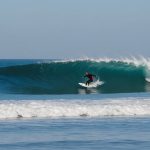Understanding High-Altitude Adventure Riding
Exploring the Scottish Highlands on an adventure bike offers riders a unique thrill but also presents specific challenges. High-altitude riding demands careful acclimatization for both the rider and the bike. The human body and the machine must adjust to reduced oxygen levels, which can affect physical performance and bike functionality. Riders should give themselves time to acclimate to prevent altitude sickness symptoms such as headache and fatigue.
The Highlands pose distinctive hurdles due to their altitude, intricately blending rugged terrains and breathtaking landscapes. Navigating through these terrains requires advanced skills and preparation. With fluctuating weather conditions and terrain, conditions can swiftly alter, affecting visibility and road grip.
Also to see : Essential Advice for Replacing Your Sport Bike Clutch Cable Amid the UK’s Unpredictable Weather
However, adventure riding in high-altitude regions offers immense benefits. The serene beauty of the Scottish Highlands, from sweeping moors to towering peaks, is a feast for the senses. It allows riders to engage with nature intimately and push their boundaries.
For enthusiasts, understanding the intricate balance between nature and machine in these adventures is fulfilling. With the proper gear and equipment, safety measures, and acclimatization, high-altitude adventure riding transforms into an exhilarating journey of discovery and personal growth.
Have you seen this : Best Sport Bike Protection Gear Materials: Prime Picks for the UK’s Unpredictable Weather
Essential Maintenance for Sport Bikes
Maintaining a sport bike for high-altitude adventures like those in the Scottish Highlands requires attention to specific challenges. An essential part of preparation is a thorough pre-ride checklist. Riders must inspect the fuel system as fuel mixtures change at higher altitudes, often necessitating adjustments for optimal performance. Additionally, verify the air filter’s condition, crucial for maintaining engine efficiency in thinner air.
Before embarking on long rides, certain servicing practices are highly recommended. Check the coolant level and ensure it meets high-altitude requirements, as engines can overheat easier in thin air. Also, assess brake fluid and pad condition to ensure reliability in mountainous terrains.
Riders often face altitude-related bike issues, such as reduced engine power or stalling. These can usually be addressed by proper tuning and ensuring the fuel injection system is set for higher altitudes. Consider upgrading to high-performance spark plugs to enhance ignition stability.
Incorporating these proactive maintenance steps ensures sport bikes function optimally, minimizing risks and enhancing the overall adventure experience. Prioritising maintenance is key to enjoying the breathtaking landscapes without unwanted disruption.
Modifications for Optimal Performance
When preparing your sport bike for high-altitude adventures, certain bike modifications are essential to maintain optimal performance. At higher elevations, the engine requires specific tuning to compensate for reduced air density. This process often involves recalibrating the fuel injection system to ensure the correct air-fuel mixture, which supports efficient combustion despite thinner air.
Additionally, swapping the standard air filters with high-flow variants can significantly enhance engine respiration. These filters allow more air through, adapting to the decreased oxygen levels in the atmosphere. Upgrading the exhaust system can also be beneficial, providing better airflow and helping the engine to expel exhaust gases more efficiently, thereby boosting overall performance.
Selecting the right tires is crucial due to varying terrains in the Scottish Highlands. Opt for tires that offer superior grip and stability on both rugged and smooth surfaces. This choice can help mitigate risks associated with loose gravel and slick patches often encountered in the Highlands.
Effective bike modifications not only optimize performance but also improve safety and control, ensuring a more seamless and enjoyable riding experience in high-altitude regions.
Route Planning and Navigation
Accurate route planning is pivotal when embarking on an adventure through the Scottish Highlands. The landscape is diverse, with each path offering unique vistas and challenges, making detailed planning critical. Exploring popular routes such as the North Coast 500 can provide an unparalleled blend of breathtaking coastal views and intriguing inland tracks.
Utilizing reliable navigation tools can greatly enhance the riding experience. GPS devices tailored for motorcycling are recommended, offering precise guidance even in remote areas. Technology advancements also offer turn-by-turn navigation, ensuring riders stay on course while freeing them to focus on the exhilarating surroundings.
Understanding changing road conditions is vital. Weather systems can swiftly transform clear skies into mist or rain, directly impacting road grip. Regularly consult weather forecasts to anticipate and prepare for these shifts. It’s wise to mark the locations of essential services like fuel stations and rest areas, which can be sparse in remote regions.
For riders passionate about sport biking, the Scottish Highlands presents an opportunity to test skills, endurance, and navigation precision amidst some of the most compelling routes available in the UK.
Gear and Equipment Recommendations
Choosing the right riding gear and motorcycle equipment is vital for high-altitude adventures. Safety is of utmost importance, so investing in top-tier safety gear such as helmets with excellent ventilation is necessary. Ventilation aids comfort, helping riders adjust to changing weather as they ascend.
For storing essentials, consider durable panniers or tank bags. They offer secure storage without compromising riding stability. Soft bags with waterproof materials provide protection from moisture—a common occurrence in high-altitude regions like the Scottish Highlands.
Clothing choices significantly impact rider comfort and safety in unpredictable weather. Opt for layered clothing systems. Start with moisture-wicking base layers to maintain dryness and add insulated layers for warmth. Jackets with removable liners offer flexibility to adapt to varying temperatures.
Must-have items include insulated gloves and breathable, waterproof boots. These ensure both comfort and safety in fluctuating conditions often encountered during adventure biking. Proper gear not only enhances enjoyment but also ensures safety, allowing riders to focus on the adventure without the distraction of discomfort or inadequacy. By considering these gear essentials, riders can effectively prepare for challenges high-altitude terrains present.
Safety Measures for High-Altitude Riding
When undertaking high-altitude riding, it is crucial to adhere to key safety protocols in such environments. Riders must familiarize themselves with the signs of altitude-related illnesses, as recognizing symptoms early can avert serious health risks. Altitude sickness often manifests as headaches, dizziness, and fatigue. Simple measures, such as gradual acclimatization and hydration, are effective in mitigating these symptoms.
Emergency preparedness is another vital aspect. Riders should always carry a comprehensive first-aid kit tailored to the specific challenges of high-altitude environments. Ensuring you have emergency contacts and a reliable communication device, like a satellite phone, is essential. Moreover, knowledge of the nearest medical facilities is beneficial in case of severe symptoms.
High-altitude terrains present their own set of risk management challenges, particularly sudden weather changes. Investing in quality navigation tools can be a life-saver, as they provide real-time updates on weather and navigation, enabling riders to make informed decisions. Riders should also practice defensive riding, which includes maintaining a safe speed and being aware of other adventure seekers. Prioritizing safety not only enhances the experience but also ensures a successful and injury-free adventure.
Personal Experiences and Testimonials
Hearing from seasoned adventure bikers can illuminate the nuances of riding in the Scottish Highlands. Rider experiences often highlight the thrill and challenge, underscoring the importance of thorough preparation. One rider, referencing a steep climb through rugged landscapes, shared how essential tuning adjustments elevated their bike’s performance, enabling a smooth yet exhilarating experience.
Riders frequently share testimonials about acclimatization challenges. Altitude effects can alter both physical performance and bike functionality. Thus, many riders emphasise gradual ascent and breaks to mitigate symptoms like dizziness and fatigue. This adaptability not only aids in safety but enriches the journey, allowing riders to fully engage with the stunning vistas.
Adventure stories commonly spotlight the value of carefully selected riding gear. Testimonials from high-altitude adventurers reiterate the importance of layered clothing and high-quality helmets for comfort across unpredictable weather patterns.
Lessons learned often revolve around the need for robust planning. Experiences highlight how prior knowledge of terrain and reliable navigation aids significantly enhance safety and enjoyment. Such insights are invaluable, offering aspiring riders guidance and inspiring tales packed with practical knowledge.






